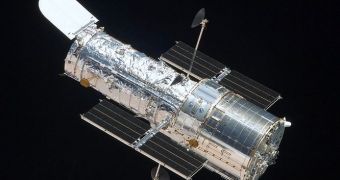Scientists operating the Hubble Space Telescope announce that the iconic instrument will be extensively used over the coming months, in producing one of the most detailed maps of how the earliest stars and galaxies appeared and developed. This ambitious new project, which seeks to have the famous observatory peering deep within the Universe in five different directions, is expected to take a lot of observation hours on one of the most solicited pieces of equipment in the world. However, this sort of exhaustive investigations is absolutely necessary if experts are to gain insight into the most basic processes underlying the formation of everything around us.
It is estimated that, throughout its study, Hubble will image no less than 250,000 galaxies, all of which will be seen as they were in the first third of the current cosmic time. In addition to seeing the galaxies themselves, the collaboration of astronomers that will control the survey will also be looking for the earliest signs indicating the development of supermassive black holes, as well as for traces of very distant supernovae. The last objective is very important because it could provide astrophysicists with new data on understanding how the Universe evolved, the speed at which it now expands, and so on.
“This is an effort to make the best use of Hubble while it is at the apex of its capabilities, providing major legacy data sets for the ages,” explains University of California in Santa Cruz (UCSC) professor and chair of astronomy and astrophysics, Sandra Faber. She will also be acting as project leader for the initiative, ScienceDaily reports. Though the total observations time on Hubble will not exceed four months, the actual study periods will be spaced out over the next two to three years. This particular investigation is one of the few selected under the Hubble Multi-Cycle Treasury Program. The main instruments that the study will use will be the Advanced Camera for Surveys (ACS) and the Wide Field Camera 3 (WFC3), one of the most advanced such imaging system flown to space.
“We want to look very deep, very far back in time, and see what galaxies and black holes were doing back then. It's important to observe in different regions, because the Universe is very clumpy, and to have a large enough sample to count things, so we can see how many of one kind of object versus another kind there were at different times. The earliest galaxies we see are truly infant galaxies. We want to know when massive galaxies first appeared, and when they started to look like the beautiful spiral galaxies we see today. This study will allow us to chart for the first time the maturation process of galaxies,” Faber says.

 14 DAY TRIAL //
14 DAY TRIAL //